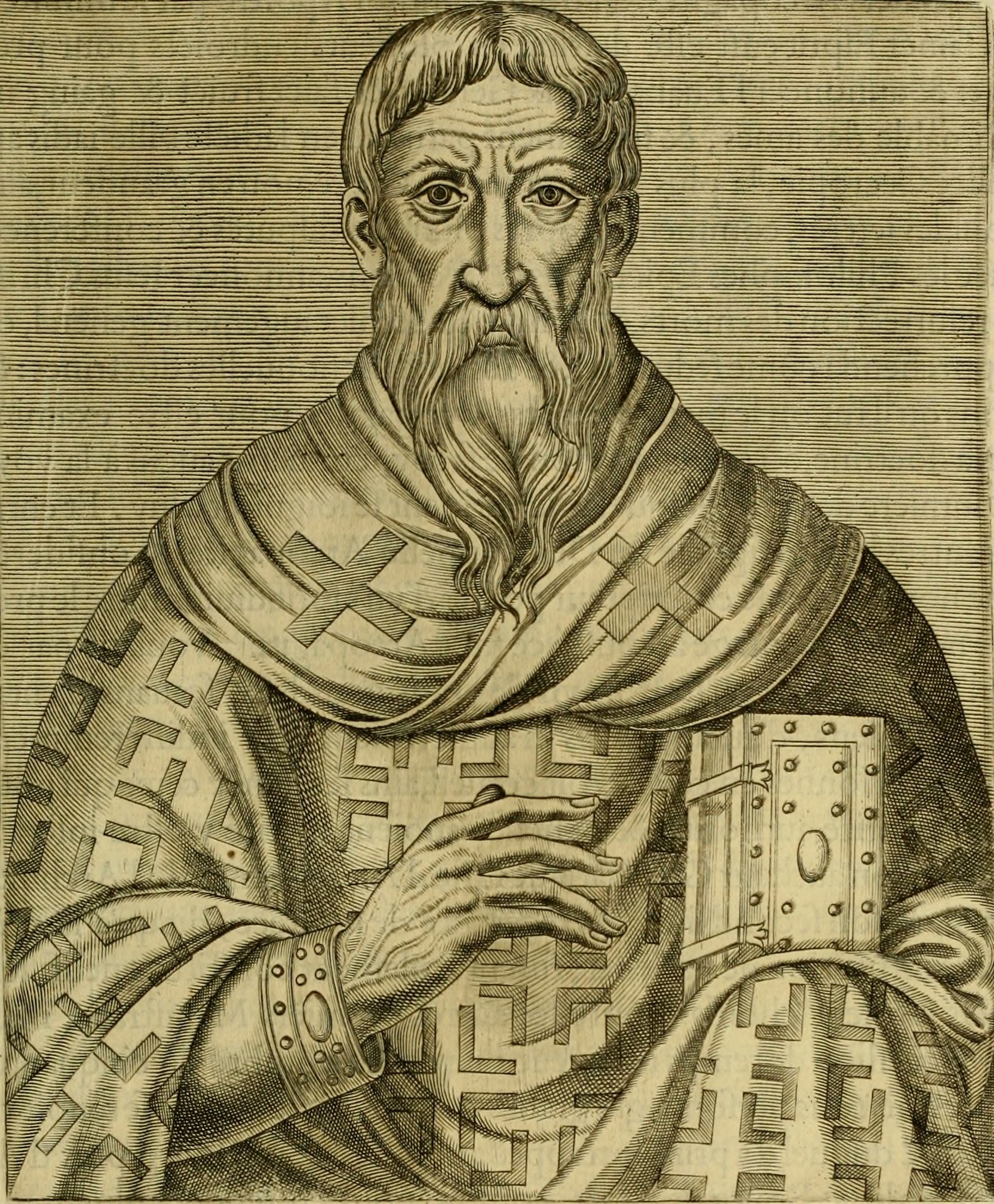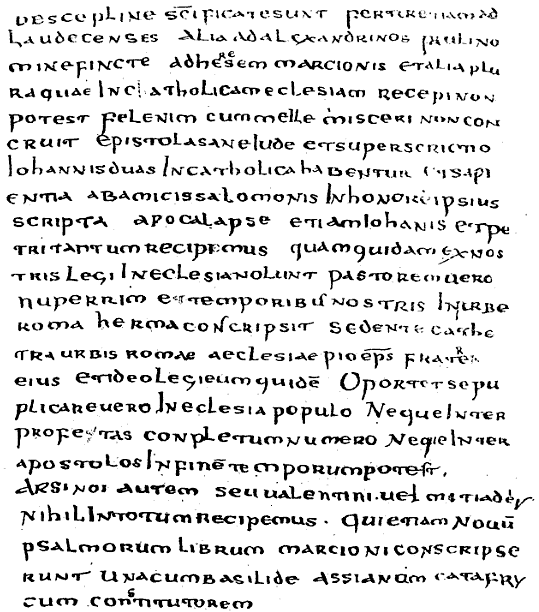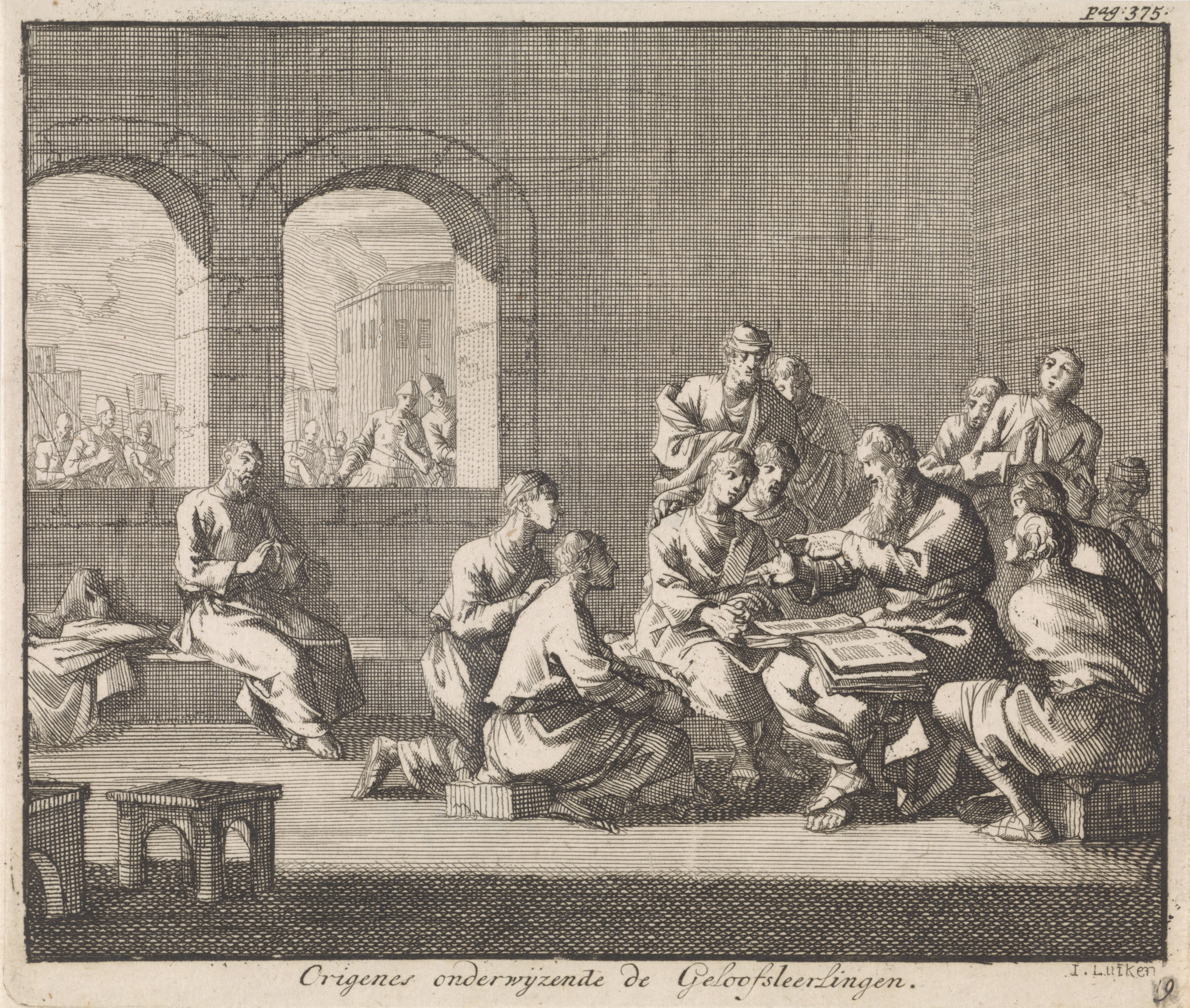|
Authorship Of The Pauline Epistles
The Pauline epistles are the thirteen books in the New Testament traditionally attributed to Paul the Apostle. There is strong consensus in modern New Testament scholarship on a core group of authentic Pauline epistles whose authorship is rarely contested: Romans, 1 and 2 Corinthians, Galatians, Philippians, 1 Thessalonians, and Philemon. Several additional letters bearing Paul's name are disputed among scholars, namely Colossians, 2 Thessalonians, Ephesians, 1 and 2 Timothy, and Titus. Scholarly opinion is sharply divided on whether or not Colossians and 2 Thessalonians are genuine letters of Paul. The remaining four contested epistles – Ephesians, as well as the three known as the Pastoral Epistles (1 and 2 Timothy, and Titus) – have been labeled pseudepigraphical works by most critical scholars. Some scholars have proposed that Paul may have used an ''amanuensis'', or secretary, in writing the disputed letters, although such a solution would not explain the ... [...More Info...] [...Related Items...] OR: [Wikipedia] [Google] [Baidu] |
Pauline Epistles
The Pauline epistles, also known as Epistles of Paul or Letters of Paul, are the thirteen books of the New Testament attributed to Paul the Apostle, although the authorship of some is in dispute. Among these epistles are some of the earliest extant Christian documents. They provide an insight into the beliefs and controversies of early Christianity. As part of the canon of the New Testament, they are foundational texts for both Christian theology and ethics. Most scholars believe that Paul actually wrote seven of the thirteen Pauline epistles ( Galatians, Romans, 1 Corinthians, 2 Corinthians, Philemon, Philippians, 1 Thessalonians), while three of the epistles in Paul's name are widely seen as pseudepigraphic ( 1 Timothy, 2 Timothy, and Titus).New Testament Letter Structure fro < ... [...More Info...] [...Related Items...] OR: [Wikipedia] [Google] [Baidu] |
Pseudepigrapha
A pseudepigraph (also :wikt:anglicized, anglicized as "pseudepigraphon") is a false attribution, falsely attributed work, a text whose claimed author is not the true author, or a work whose real author attributed it to a figure of the past. The name of the author to whom the work is falsely attributed is often prefixed with the particle ":wikt:pseudo-, pseudo-", such as for example "pseudo-Aristotle" or "pseudo-Dionysius": these terms refer to the anonymous authors of works falsely attributed to Aristotle and Dionysius the Areopagite, respectively. In biblical studies, the term ''pseudepigrapha'' can refer to an assorted collection of Jewish religious works thought to be written 300 BCE to 300 CE. They are distinguished by Protestantism, Protestants from the deuterocanonical books (Catholic and Orthodox) or Apocrypha (Protestant), the books that appear in extant copies of the Septuagint in the fourth century or later and the Vulgate, but not in the Hebrew Bible or in Protestan ... [...More Info...] [...Related Items...] OR: [Wikipedia] [Google] [Baidu] |
Irenaeus
Irenaeus ( or ; ; ) was a Greeks, Greek bishop noted for his role in guiding and expanding Christianity, Christian communities in the southern regions of present-day France and, more widely, for the development of Christian theology by opposing Gnostic interpretations of Christian Scripture and defining proto-orthodoxy. Originating from Smyrna, he had seen and heard the preaching of Polycarp, who in turn was said to have heard John the Evangelist. Chosen as Roman Catholic Archdiocese of Lyon, Bishop of Lugdunum, now Lyon, Irenaeus wrote his best-known work ''Against Heresies (Irenaeus), Against Heresies'' around 180 as a refutation of gnosticism, in particular that of Valentinus (Gnostic), Valentinus. To counter the doctrines of the gnostic sects claiming Sophia (gnosticism), secret wisdom, he offered three pillars of orthodoxy: the Bible, scriptures, the Apostolic Tradition, tradition said to be handed down from the apostles, and the teaching of the apostles' Apostolic succ ... [...More Info...] [...Related Items...] OR: [Wikipedia] [Google] [Baidu] |
Papyrus 46
Papyrus 46, also known as ''P. Chester Beatty II'', is an early Greek New Testament manuscript written on papyrus, and is one of the manuscripts comprising the Chester Beatty Papyri. It is designated by the siglum in the Gregory-Aland numbering of New Testament manuscripts. Manuscripts among the Chester Beatty Papyri have had several provenances associated with them, the most likely being the Faiyum. Using the study of comparative writing styles (palaeography), it has been dated to between 175 and 225,Griffin, Bruce W. (1996)"The Paleographical Dating of P-46"/ref> or to the early 3rd century CE. It contains verses from the Pauline Epistles of Romans, 1 Corinthians, 2 Corinthians, Galatians, Ephesians, Colossians, Philippians, 1 Thessalonians, and Hebrews. Some leaves are part of the Chester Beatty Biblical Papyri, and others are in the University of Michigan Papyrus Collection. In November 2020, the Center for the Study of New Testament Manuscripts (CSNTM) in conjun ... [...More Info...] [...Related Items...] OR: [Wikipedia] [Google] [Baidu] |
Muratorian Fragment
The Muratorian fragment, also known as the Muratorian Canon (Latin: ), is a copy of perhaps the oldest known list of most of the books of the New Testament. The fragment, consisting of 85 lines, is a Latin manuscript bound in a roughly 8th-century codex from the library of Columbanus's monastery at Bobbio Abbey; it contains features suggesting it is a translation from a Greek original written in the late 2nd century (). Other scholars suggest it might have been originally written as late as the 4th century, although this is not the consensus opinion. Both the degraded condition of the manuscript and the poor Latin in which it was written have made it difficult to translate. The beginning of the fragment is missing, and it ends abruptly. The fragment consists of all that remains of a section of a list of all the works that were accepted as canonical by the churches known to its original compiler. During the time period of early Christianity, there was no accepted "New Testam ... [...More Info...] [...Related Items...] OR: [Wikipedia] [Google] [Baidu] |
Origen Of Alexandria
Origen of Alexandria (), also known as Origen Adamantius, was an early Christian scholar, ascetic, and theologian who was born and spent the first half of his career in Alexandria. He was a prolific writer who wrote roughly 2,000 treatises in multiple branches of theology, including textual criticism, biblical exegesis and hermeneutics, homiletics, and spirituality. He was one of the most influential and controversial figures in early Christian theology, apologetics, and asceticism. He has been described by John Anthony McGuckin as "the greatest genius the early church ever produced". Overview Origen sought martyrdom with his father at a young age but was prevented from turning himself in to the authorities by his mother. When he was eighteen years old, Origen became a catechist at the or School of Alexandria. He devoted himself to his studies and adopted an ascetic lifestyle. He came into conflict with Demetrius, bishop of Alexandria, in 231 after he was ordained as ... [...More Info...] [...Related Items...] OR: [Wikipedia] [Google] [Baidu] |
Higher Criticism
Historical criticism (also known as the historical-critical method (HCM) or higher criticism, in contrast to lower criticism or textual criticism) is a branch of criticism that investigates the origins of ancient texts to understand "the world behind the text" and emphasizes a process that "delays any assessment of scripture's truth and relevance until after the act of interpretation has been carried out". While often discussed in terms of ancient Jewish, Christian, and increasingly Islamic writings, historical criticism has also been applied to other religious and secular writings from various parts of the world and periods of history. The historian applying historical criticism has several goals in mind. One is to understand what the text itself is saying in the context of its own time and place, and as it would have been intended to and received by its original audience (sometimes called the ''sensus literalis sive historicus'', i.e. the "historical sense" or the "intended se ... [...More Info...] [...Related Items...] OR: [Wikipedia] [Google] [Baidu] |
Historiography
Historiography is the study of the methods used by historians in developing history as an academic discipline. By extension, the term ":wikt:historiography, historiography" is any body of historical work on a particular subject. The historiography of a specific topic covers how historians have studied that topic by using particular sources, techniques of research, and theoretical approaches to the interpretation of documentary sources. Scholars discuss historiography by topic—such as the historiography of the United Kingdom, of historiography of World War II, WWII, of the Pre-Columbian era, pre-Columbian Americas, of early historiography of early Islam, Islam, and of Chinese historiography, China—and different approaches to the work and the genres of history, such as political history and social history. Beginning in the nineteenth century, the development of academic history produced a great corpus of historiographic literature. The extent to which historians are influence ... [...More Info...] [...Related Items...] OR: [Wikipedia] [Google] [Baidu] |
Alexandria
Alexandria ( ; ) is the List of cities and towns in Egypt#Largest cities, second largest city in Egypt and the List of coastal settlements of the Mediterranean Sea, largest city on the Mediterranean coast. It lies at the western edge of the Nile Delta, Nile River delta. Founded in 331 BC by Alexander the Great, Alexandria grew rapidly and became a major centre of Hellenic civilisation, eventually replacing Memphis, Egypt, Memphis, in present-day Greater Cairo, as Egypt's capital. Called the "Bride of the Mediterranean" and "Pearl of the Mediterranean Coast" internationally, Alexandria is a popular tourist destination and an important industrial centre due to its natural gas and petroleum, oil pipeline transport, pipelines from Suez. The city extends about along the northern coast of Egypt and is the largest city on the Mediterranean, the List of cities and towns in Egypt#Largest cities, second-largest in Egypt (after Cairo), the List of largest cities in the Arab world, fourth- ... [...More Info...] [...Related Items...] OR: [Wikipedia] [Google] [Baidu] |
Origen
Origen of Alexandria (), also known as Origen Adamantius, was an Early Christianity, early Christian scholar, Asceticism#Christianity, ascetic, and Christian theology, theologian who was born and spent the first half of his career in Early centers of Christianity#Alexandria, Alexandria. He was a prolific writer who wrote roughly 2,000 treatises in multiple branches of theology, including textual criticism, exegesis, biblical exegesis and biblical hermeneutics, hermeneutics, homiletics, and spirituality. He was one of the most influential and controversial figures in early Christian theology, Christian apologetics, apologetics, and asceticism. He has been described by John Anthony McGuckin as "the greatest genius the early church ever produced". Overview Origen sought martyrdom with his father at a young age but was prevented from turning himself in to the authorities by his mother. When he was eighteen years old, Origen became a Catechesis, catechist at the or School of Alexand ... [...More Info...] [...Related Items...] OR: [Wikipedia] [Google] [Baidu] |
Authorship Of The Epistle To The Hebrews
The Epistle to the Hebrews of the Christian Bible is one of the New Testament books whose canonicity was disputed. Traditionally, Paul the Apostle was thought to be the author. However, since the third century this has been questioned, and the consensus among most modern scholars is that the author is unknown. Ancient views The Epistle to the Hebrews was included in the collected writings of Paul from a very early date. For example, the late second-century or early third-century codex 𝔓46, a volume of Paul's general epistles, includes Hebrews immediately after Romans. While the assumption of Pauline authorship readily allowed its acceptance in the Eastern Church, doubts persisted in the West. Eusebius does not list ''Epistle to the Hebrews'' among the ''antilegomena'' or disputed books (though he included the unrelated Gospel of the Hebrews). He does record, however, that "some have rejected the Epistle to the Hebrews, saying that it is disputed by the church of ... [...More Info...] [...Related Items...] OR: [Wikipedia] [Google] [Baidu] |
The Epistle To The Hebrews
The Epistle to the Hebrews () is one of the books of the New Testament. The text does not mention the name of its author, but was traditionally attributed to Paul the Apostle; most of the Ancient Greek manuscripts, the Old Syriac Peshitto and some of the Old Latin manuscripts place the epistle to the Hebrews among Paul's letters. However, doubt on Pauline authorship in the Roman Church is reported by Eusebius. Modern biblical scholarship considers its authorship unknown, with Pauline authorship mostly rejected. A minority view Hebrews as written in deliberate imitation of the style of Paul, with some contending that it was authored by Apollos or Priscilla and Aquila. Scholars of Greek consider its writing to be more polished and eloquent than any other book of the New Testament, and "the very carefully composed and studied Greek of Hebrews is not Paul's spontaneous, volatile contextual Greek." It has been described as an intricate New Testament book.Mackie, Scott D. ''Eschat ... [...More Info...] [...Related Items...] OR: [Wikipedia] [Google] [Baidu] |








